Localization of metabolic disorders and decay of glycoproteins in lumbar intervertebral discs, vertebrae bodies, their articular surfaces and ligaments are found in 90% of cases of all pathological changes in the spinal column with the general name of osteochondrosis.That is why questions about lumbar back osteochondrosis - symptoms and treatment available at home, prevail over all others related to this pathology.
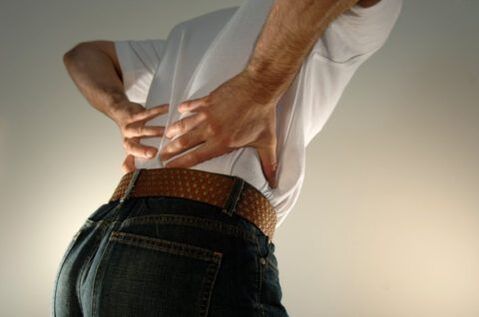
By what signs can you independently determine the start of developing an irreversible disease and in which methods can stop its further development?
Signs of osteochondrosis in the lower back
Progress of osteochondrosis pathology continues in 4 stages
- Osteochondrosis-Distrophic degenerators on ring plates and a change in the configuration of the jacket core located inside the intervertebral disc.
- Lumbar region's protenance-The prolonged extension of the plaque with fibrous ring-in the ring shape and the beginning of the destruction of the pulp nucleus membrane.
- hernia- Fibrous ring rupture and production of nuclear mass similar to out of disk gel.
- Osteophytes- Nighting of the natural lumen between the vertebrae, the spread of the pathological process in the bone tissue of the vertebrae, their joints, ligaments and periarticular muscles.
For information.It can accurately determine the degree of development of osteochondrosis and spinal column in it - to make a diagnosis, only a doctor can be based on an analysis of anamnesis and images of CT and MRI examinations.
Symptoms of lumbar spine osteochondrosis, manifested in the first phase, can be as follows:
- spine disturbance;
- increased sweating;
- a decrease in the sensitivity of the skin at the bottom of the back, on the hips, buttocks, in the foot and/or the lower leg;
- spasm of the arteries of the lower extremities, leading to the feeling of coldness in them, tingling and "goose running";
- Skin skin at the lower extremities.
The pricing that people who ignore these primary traits are paid - the development of protrusions, hernias and osteophytes.They not only interfere with normal life, but also threaten with disabilities.
Osteochondrosis of the lumbar region - symptoms of pain
If, with cervical and breast osteochondrosis, the pain often gives the hand,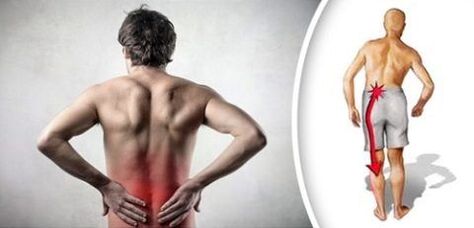 It pain with lumbar osteochondrosis radiates one, less often on both feet.
It pain with lumbar osteochondrosis radiates one, less often on both feet.
Acute Lumbalgia
Sharp, unbearable, in most cases, bilateral pain and noticeable contraction of the muscles in the lower back.The attacks can be repeated several times a year.
Chronic lumbalgia
The appearance of several weeks (months), dull and painful pain, most often on one side of the back, at the level and below the waist.Pain syndrome occurs after a long -term fixation of the hotel in an unpleasant position or after hypothermia.
Starting movement after a long resting state or sharp tendencies (curves, twisting) improve pain.With repeated periods, the localization of the pain gradually expands into the sacral section, buttocks and feet.
Diston Vazopastic Reflex
The pain in the lower back and leg is associated with a cold at the lower limb.After physical stresses, hypothermia can disappear and can intensify.
Diston Vazodilator reflex
Pain syndrome develops with the development of heat in the limbs.During and after physical activity, the skin hypertherm becomes very strong.
Radiculi and radiculopathy - radicular syndromes
Characteristic of edema, rapid and shelter pain in the lumbar region and radiation of leg pain are characteristic.
Their manifestation depends on the location and degree of damage to the intervertebral discs:
- L1: L2 - the front and inner part of the thigh hurt;
- L2: L3 - radiation in the upper thigh and the inner area of the lower leg, lack or decrease of reflexes in the knee joints, the development of scoliosis in the homolateral type is possible;
- L3: L4 - the pain in the lower back is free, while spreading along the thigh at the front and in the interior in the knee and slightly lower, an increased knee reflex occurs, and the knee itself is moderately injured;
- L4: L5 - Sharp pain, shots in the lumbar region cause its stable fixation of pathological configuration and skewing of behavior in the form of "protective positions", pear -shaped muscle spasms determine limb pain, tendon Achilles power is weakened, throat is prolonged.
Lumba -lgia and Radiculochemia
The main symptoms of lumbosacral-l5 spine osteochondrosis: S1 natural in Phase III of the pathology flow:
- Discogenic pain from the lower back radiates to one or both feet by type of pain syndrome and a decrease in the inherent reflexes of L4: L5;
- Squeeze the arteries leads to the loss of skin sensitivity;
- Simultaneous manifestation of muscular-tonic, neurotrophic and vegetative-vascular syndromes;
- The disk prolapse causes the development of the "horse tail" syndrome - the unbearable acute pain syndrome in the lower back is associated with numbness of the groin, as well as a violation of large intestinal work and organs located in the pelvis, until urinary disputes;
- Disorder functional disorder of the gastrointestinal tract, liver, and worsening of chronic diseases, for example, colitis, hemorrhoids.
Attention!There are many tips from healers who are convinced that osteochondrosis is the deposition of salts on their backs, and popular "medicines" can disperse and remove them from the body without trace.Since osteochondrosis has a different mechanism of development and current, each such guidance is 100% to get rid of osteochondrosis is a charlatan that can cause tangible damage to health.
Treatment of lower back osteochondrosis
To prevent osteochondrosis with sedentary work, it is necessary to perform 10-minute "discharge" exercises, a complex of which should be performed once per hour.
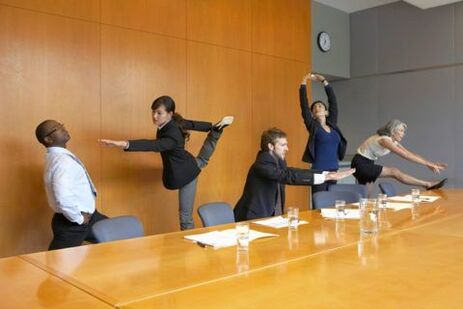
Lumbar osteochondrosis therapy is always performed in complexes, but also depends on the stage of development of the disease:
| Treatment methods | The degree of osteochondrosis | ||
| I | of secondment | III-IV | |
| Surgical intervention | - | - | + + |
| Anesthetic drug | + + | + + | + + |
| Non -inflammatory drugs non -inflammatory | - | partially | + + |
| Hormonal and antidepressants drugs | - | - | + + |
| Chondroprotectors | Efficiency is not proven | ||
| Vitamin therapy (group B) | + + | Ineffective | |
| Massage | + + | + + | + + |
| Manual therapy | + + | partially | - |
| Swimming, walks + | + + | + + | |
| Running cowards and dance exercises | partially | - | - |
| Dynamic | + + | + + | partially |
| Static yoga exercises | + + | + + | + + |
| Class in Simulators with Weight | + + | partially | - |
Important!A unavailable component of osteochondrosis treatment at any stage is normalization and strict observance of drinking day-to-1.5-2 l of clean water per day, as well as optimization of the diet in order to reduce body weight and further maintain the body of the body from 18.5 to 24.99, which is calculated by the formula (kg).
Modern medicine has not come up with a drug that would cure osteochondrosis.If you find the first symptoms of osteochondrosis, do not waste precious time - start moving more and eating properly!Today these are the only effective measures that can slow or stop the progression of the disease.
The daily practice of the two simple yogas positions will also help lazy to stop the pathological processes that take place on the back.Since these "magic" exercises are simple and are performed quite static to see the photo.
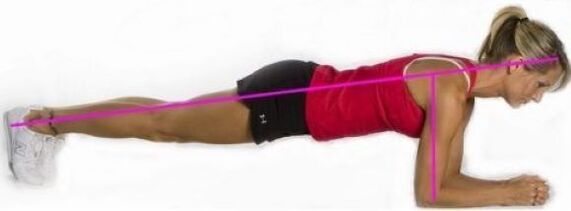
The bar should be held from 10-15 seconds, gradually increasing time to 3 minutes, not forgetting rhythmic breathing: soak with its nose, bring to the folded lips with a tube.
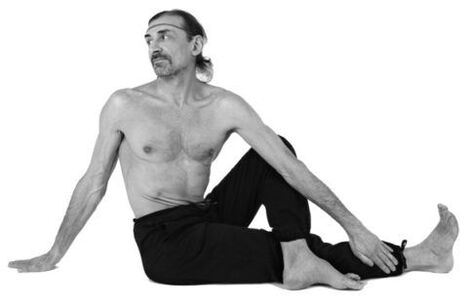
During this winding of Marichiasan, which lasts from 15 seconds to 1.5 minutes, performed in each direction, it is necessary to make light spine light that will help insert the vertebrae in the place without addressing the services of a manual therapist.
The osteochondrosis of the spine is inevitable because even in the absence of aggravating causes: an inherited predisposition, a inactive lifestyle, a profession using heavy physical work, a surplus of the body, suffered injuries - its occurrence will be caused by the physiological aging of the body and the natural dehydration of the nucleus.Only a healthy and active lifestyle can slow these processes, which should try to maintain until old age.
















































